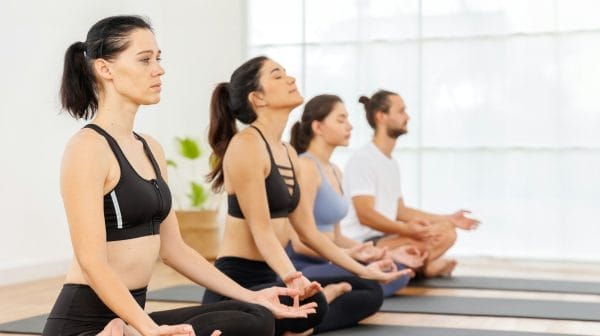The Art of Living in the Present: Mindfulness Meditation Techniques
In a world where the pace of life is constantly accelerating, finding peace and grounding in the present moment has become a sought-after skill. Mindfulness meditation offers a path to achieving this state of being, teaching us the art of living fully in the here and now.
This article explores the essence of mindfulness meditation, presenting techniques and insights to help you incorporate this practice into your daily life.

Understanding Mindfulness Meditation
![]()
Mindfulness meditation is a practice rooted in ancient Buddhist philosophy, but one doesn’t need to follow any spiritual path to reap its benefits. At its core, mindfulness is about paying attention to the present moment, without judgment. It’s a form of mental training that teaches us to observe our thoughts, feelings, and sensations as they are, helping us to break free from the automatic responses conditioned by our past experiences and societal norms.
Recent studies have shown that regular mindfulness practice can lead to significant improvements in mental health, reducing symptoms of anxiety, depression, and stress. Moreover, mindfulness can enhance cognitive functions, such as attention, concentration, and memory, and even contribute to physical well-being by lowering blood pressure and strengthening the immune system.
Starting With the Basics: Breath Awareness
![]()
One of the simplest and most effective ways to begin practicing mindfulness is through breath awareness. This technique involves focusing your attention on your breath, observing each inhalation and exhalation without trying to change or control it. Here’s how to do it:
- Find a quiet place where you can sit comfortably without being disturbed.
- Close your eyes and take a few deep breaths to settle into the space.
- Shift your focus to your natural breathing pattern, noticing the sensations of air moving in and out of your body.
- When your mind wanders, gently acknowledge the distraction and return your focus to your breath.
This practice can be as short as a few minutes or as long as you wish. The key is consistency; even a few minutes of breath awareness daily can make a significant difference in your ability to stay present.
Expanding Your Practice: Body Scan and Mindful Observation
![]()
As you become more comfortable with breath awareness, you may wish to explore other mindfulness meditation techniques. Two popular methods are the body scan and mindful observation.
Body Scan Meditation
The body scan is a practice that involves paying attention to different parts of the body in succession, from the toes to the top of the head. It’s an effective way to connect with your physical self and identify areas of tension or discomfort. Here’s a simple guide:
- Lie down on your back in a comfortable position.
- Close your eyes and take a few deep breaths, relaxing into the surface beneath you.
- Begin at your feet and slowly move your attention up through your body, noticing any sensations, thoughts, or emotions that arise.
- If you encounter tension, breathe into it, allowing it to soften with each exhale.
- Continue until you’ve scanned your entire body, then take a few moments to rest in the awareness of your whole self.
Mindful Observation
Mindful observation involves choosing an object and focusing your attention on it as if you’re seeing it for the first time. This technique can be applied to anything in your environment, but natural objects like a flower or a tree are often recommended. The goal is to notice as many details as possible, engaging all your senses, which can lead to a profound sense of connection and presence.
Incorporating Mindfulness Into Daily Life
![]()
While dedicated meditation sessions are valuable, the true power of mindfulness lies in its applicability to everyday life. Here are some practical ways to stay mindful throughout your day:
- Mindful Eating: Pay attention to the colors, textures, and flavors of your food, savoring each bite and chewing slowly.
- Mindful Walking: Notice the sensation of your feet touching the ground, the rhythm of your steps, and the sights, sounds, and smells around you.
- Mindful Listening: When conversing with others, focus fully on what they’re saying, resisting the urge to formulate your response while they’re still talking.
By integrating these practices into your daily routine, you’ll find yourself more attuned to the richness of the present moment, leading to a more balanced and fulfilling life.
Conclusion: The Path to Present Living
![]()
Mindfulness meditation offers a powerful toolkit for navigating the complexities of modern life with grace and equanimity. By starting with basic techniques like breath awareness and gradually incorporating more advanced practices, you can cultivate a deep sense of presence and awareness. Remember, the journey to mindfulness is a personal one, and the most important step is to begin. With patience and practice, the art of living in the present can become not just an aspiration, but a daily reality.
As you embark on this path, be kind to yourself, embracing each moment as an opportunity to learn and grow. The art of mindfulness is not about achieving perfection but about fostering a compassionate and non-judgmental awareness of the here and now. In doing so, you’ll discover not only a profound sense of peace but also a deeper connection to the world around you.



